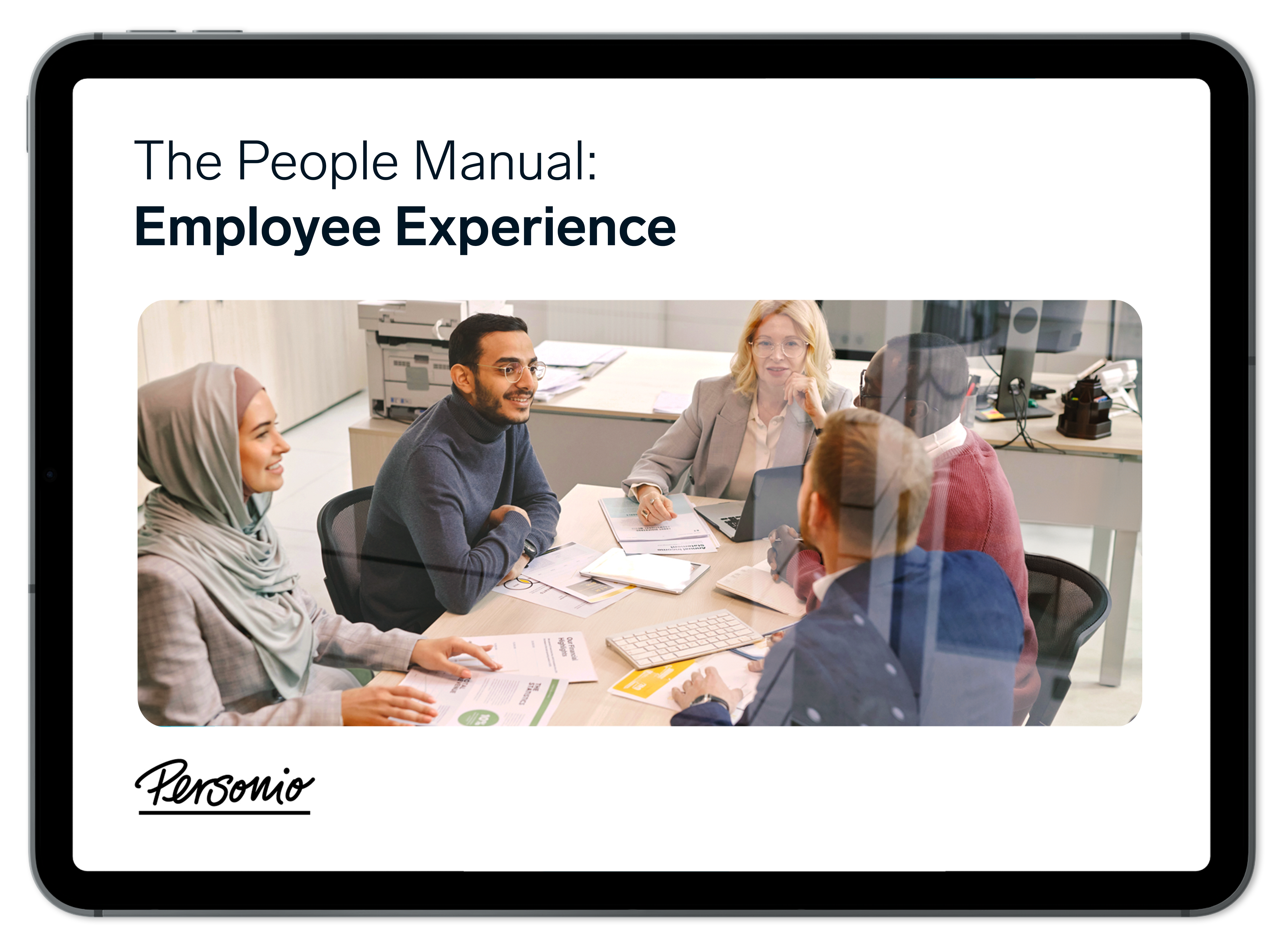Employee Engagement Surveys: 30 Questions Worth Asking

Do employee engagement surveys work? Well, that starts with a rather simple question: How engaged are your employees, really? Ready to see what employees are really thinking and develop a strategy to improve engagement? It’s time to put assumptions aside and dig into the data with an employee engagement survey.
Keen to get started? Download our employee survey template and read along.What Is An Employee Engagement Survey?
Employee engagement surveys are run to measure the motivation levels of employees in an organisation. Using these surveys, HR teams can gain insights into how employees feel about their work and their workplace.
What Is the Purpose of an Engagement Survey?
An employee engagement survey is designed to reveal a few things. And, depending on how you design it, it can uncover different things for different organisations. Many organisations will primarily focus on:
Employee commitment (related to churn risk)
Employee productivity (related to business outcomes)
Employee satisfaction (related to culture)
Employee passion (related to job design and organisational structure)
Most of all, employee engagement surveys serve to identify areas of success, as well as areas of improvement for organisations.
How Important Is Employee Engagement?
Let’s talk about employee engagement — or more specifically, the lack thereof in the UK: In 2019, only 11% of the UK workforce felt engaged in their work, with 68% not engaged and 21% actively disengaged.
According to Personio’s Chief People Officer, Ross Seychell, employee engagement is far more than a vanity statistic. In fact, he views it as an underestimated revenue driver for successful organisations. Read his post about it right here.
Three of the most common and impactful drivers of employee engagement are:
Driver | Explained |
|---|---|
Learning and Development Opportunities | Employees have ample opportunities to grow and learn in their role and industry with the support and guidance of leadership. They’re given the tools they need to succeed. |
Leadership Alignment and Support | Employees have confidence and trust in their leadership team. Leadership demonstrates to employees how much they value them and they’ve conveyed a clear vision and mission for the company. |
Quality Service | The team is dedicated to delivering quality service and improving their product and workplace, and that dedication is clearly demonstrated by employees and leadership alike. |
Read out guide to employee engagement strategies today.
How Do You Run an Employee Engagement Survey?
A great employee engagement survey requires focus. First, you need to decide the area you want to hone in on for your survey. Do you want to get a sense of employee motivation? Potential attrition? Satisfaction? Try and pick one or two areas of focus.
From there, try the following steps:
Craft your survey. Pull together questions that speak back to your area of focus (you can use some of the many questions we have pulled together below.
Run your survey. Whether on an organisation-wide level or piloted via different departments, ask employees to fill out the survey (and give a due date).
Activate your survey. To boost adoption, identify "survey champions" who can help ensure employees finish their surveys on time.
Analyse the results. Read the results given and start to piece together trends and highlights (as well as areas for improvement).
Share your results. Start by sharing them with your CEO or executive team, and then trickle down the results throughout your organisation.
Always request feedback. Encourage employees to offer more feedback to add colour and commentary to any of the trends you have identified.
Start with solutions. Alongside leadership, start addressing concerns brought up in your employee engagement survey and work on fixing problematic areas.
Should Employee Engagement Surveys Be Anonymous?
This depends — are your employees comfortable with delivering feedback about the company to their manager or leadership team? In some cases, anonymity can be a strength; employees may feel more comfortable giving honest feedback.
When there’s a name to the survey, though, management can build out more personalised improvement plans based on their answers, leading to more detailed action plans and better end results.
If you’re unsure how to move forward, quickly survey your employees to see which method they prefer, or give them an option to remain anonymous if desired.
When Should You Do an Employee Engagement Survey?
Many organisations set a standard of running one employee engagement survey per year. In these cycles, they will ask many of the same questions to begin building benchmarks to monitor year-over-year (YoY) growth.
At the same time, many teams will establish a yearly "theme" for their engagement survey, to track more in-the-moment results. This could be something like feedback, culture, line management, or something else.
The idea is to both showcase a recurring trend in core metrics, but also to key in on some issues that may be going on in that specific moment of time.
Proactive Surveys | Reactive Surveys |
|---|---|
Some workplaces conduct annual employee engagement surveys to check in on their teams and tweak smaller aspects of the company depending on the insights they receive. | Other workplaces will conduct a survey once a major issue has been brought to their attention or they’ve seen a rise in attrition or decrease in productivity. Some sort of red flag has been raised and they need to get to the bottom of it. |
Don't forget: An employee engagement survey can be overwhelming. You need to be make sure not to over-run them and exhaust your workforce. Asking too much of them may lead to bias against these surveys and artificially deflate your results.
Instead, consider pulse surveys. These are more agile versions of engagement surveys and can be run quarterly, with little effort and can help create an even greater picture of certain trends in your organisation.
Employee Engagement Survey Question Examples
Ready to run your own employee engagement survey? Pull from any of the below questions to help build your survey and get a better read for employee motivation in your organisation.
Note: Many of the following questions can be presented as multiple-choice, as a sliding scale or as an open-ended question. You should choose the method that works best for your workplace and goals.
The Basics
Name
Role
Department
Location
Years with Company
Engagement
I recommend our organisation as a fantastic place to work
________ sparks my motivation to perform at my best
I see myself still working here in a year
I feel excited to come to work everyday
The work that I do makes me feel proud
Management
My manager shares actionable feedback often
My manager is invested in my wellbeing
My manager regularly shares relevant information from their manager and senior leadership
My manager communicates clear goals for our team
My manager motivates me to give my very best at work
Feedback & Recognition
Relative to roles elsewhere, I believe my total compensation is fair
Performance is evaluated fairly in my role
The organisation rewards and recognises the right behaviours
I feel recognised for my wins, both big and small
Advancement & Retention
There is a clear path for my advancement within _____________
My manager fosters my professional development
Company Values
People at ___________ act in alignment with our organisation's core values
Enablement
I have access to everything I need (eg. resources, tools, etc.) to do my job well
I have enough autonomy to perform my job effectively
Generating Loyalty
My manager created a safe environment for discussion about this change
My manager served as a well-informed resource if I had questions about changes
Building Connection
It was explained well how the change will impact me
I received adequate support and resources that helped me navigate this change
Comments
What are we doing great at _____________?
What are we not doing so great at _____________?
Free Download: Employee Survey Template
Interested in figuring out where things stand in your organization? Download our employee survey today to start running recurring employee engagement surveys right now.
Download Our Survey TemplateHow Many Questions Should Be in an Employee Engagement Survey?
For a yearly employee engagement survey, try and shoot for somewhere between 20-30 questions. This will depend a lot on the organisational appetite for this kind of survey, so to ensure adoptions rates remain high, go for the lower side of the scale (around 20).
Additionally, ensure that employees have the opportunity to offer feedback and additional thoughts on any of your asked questions. This can typically add a lot of value in determining not only how they answered the question, but how you asked it.
Employee Engagement Survey Results: What Now?
Once you’ve received the completed surveys, review the data with the appropriate leadership team members to identify specific departments or roles that are struggling the most or to identify the most common issues.
Work together to develop a clear plan of action that can help improve the most important issues and use the data to shape your workplace culture, offerings, structure, mission clarity or leadership approach.
Don’t call out individual employees or use their survey answers against them; instead, work with employees one-on-one as needed to address any larger issues gleaned from the survey.
This can be a great opportunity to help an employee excel in their role or find a better-suited role for them within the company.
Employee Experience Is Everything
Everything starts with people. And, at the end of the day, you don’t know what you don’t know. So, your People team needs to find out.
Employee engagement surveys can be a valuable tool in identifying organisational blindspots, areas of improvement and so much more. But, you have to run them the right way and you need time to run them, too.
Speak with an HR expert today to discuss how Personio can help your team gain back time to focus on more important matters. Like, running your next great engagement survey.

